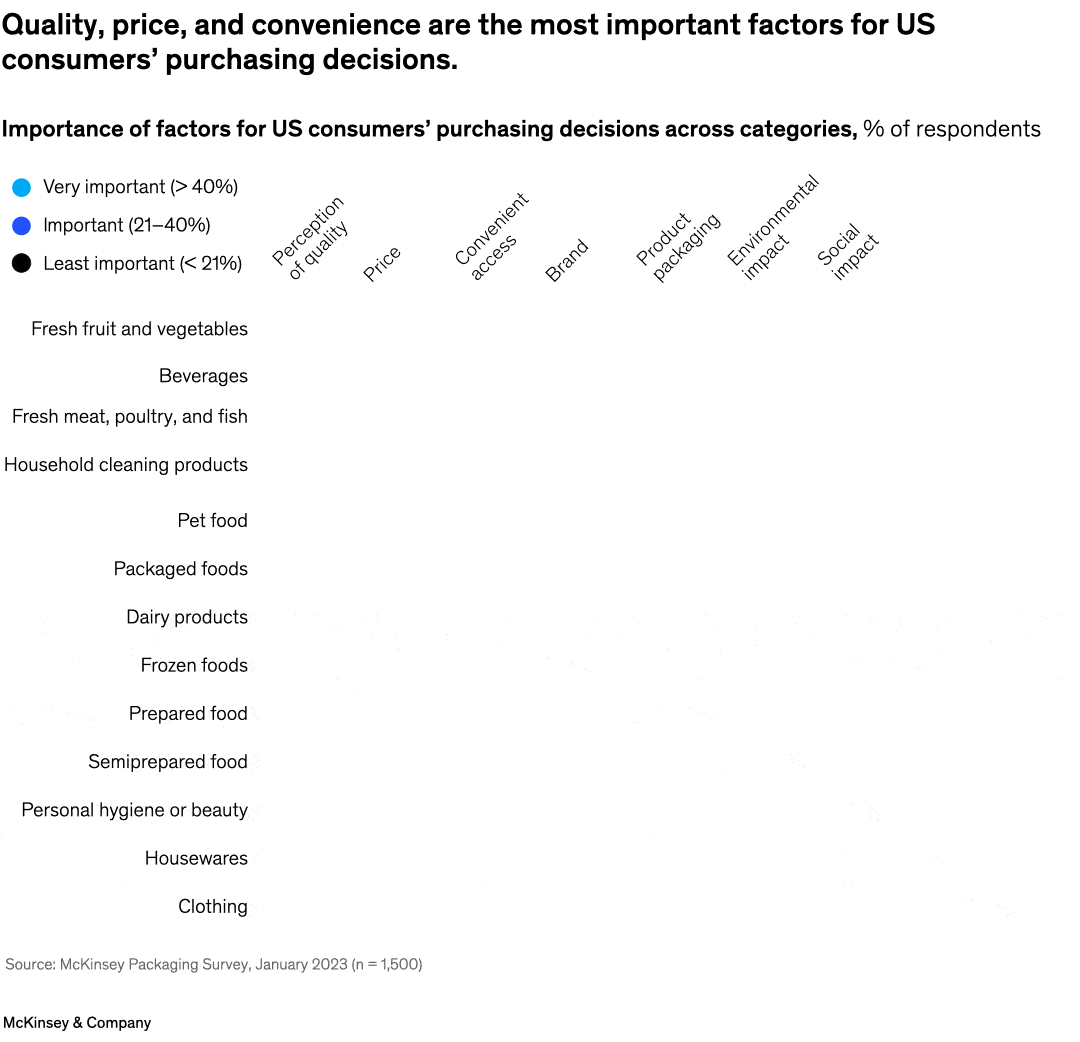US consumers say product packaging and environmental impact are less important than quality, price, and convenience when considering a purchase, according to a survey by senior partner David Feber and colleagues. However, a deeper dive into the data reveals some difference in attitudes based on demographics. Younger and urban consumers tend to prioritize environmental considerations, compared with baby boomers and consumers living in rural areas, for example.

Image description:
A bubble heat-map displays the most important factors in US consumer purchasing decisions across 7 metrics and 13 segments, measured as a percentage of respondents. The 7 metrics are, in order of importance to respondents and listed from left to right: perception of quality, price, convenient access, brand, packaging, environmental impact, and social impact. The 13 segments are: fruit and vegetables, beverages, fresh meat and fish, household cleaning products, pet food, packaged foods, dairy products, frozen foods, prepared food, semi-prepared food, personal hygiene or beauty, housewares, and clothing. From top to bottom, across all 13 segments, US consumers rank quality, price, and convenience as very important, with nearly each of those 3 categories ranking above 40%. The least-important 2 segments, according to respondents, are the environment and social impact, both with ratings of less than 30%.
Source: McKinsey Packaging Survey, January 2023 (n = 1,500).
End of image description.
To read the article, see “Sustainability in packaging: US survey insights,” April 26, 2023.